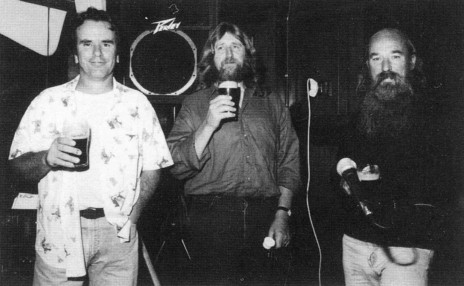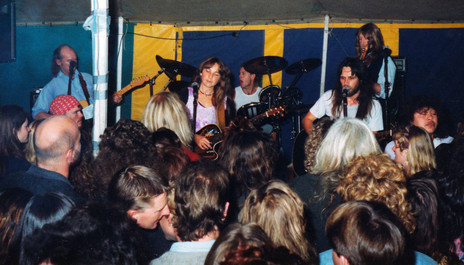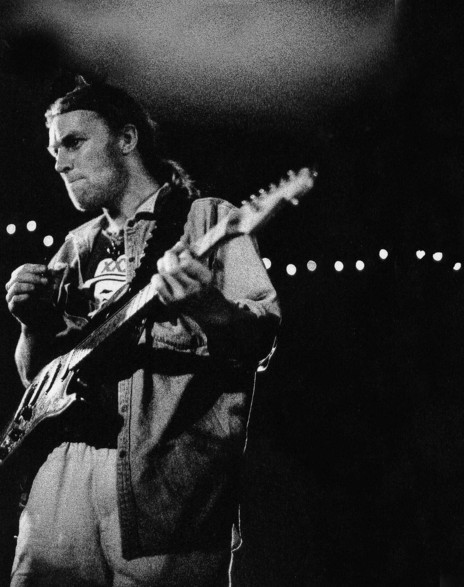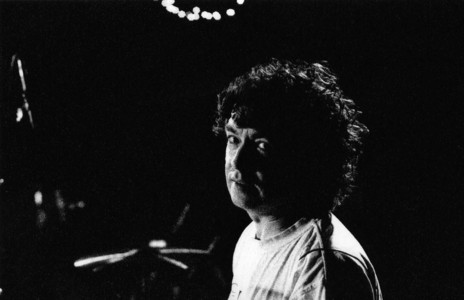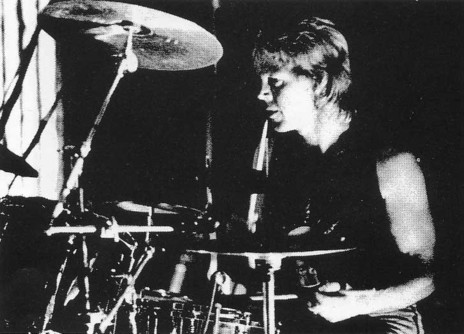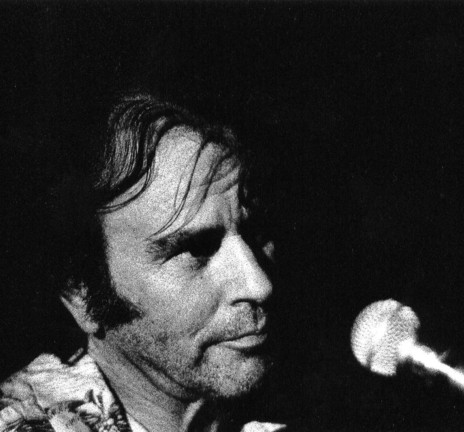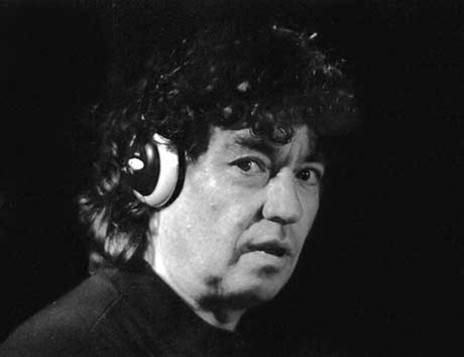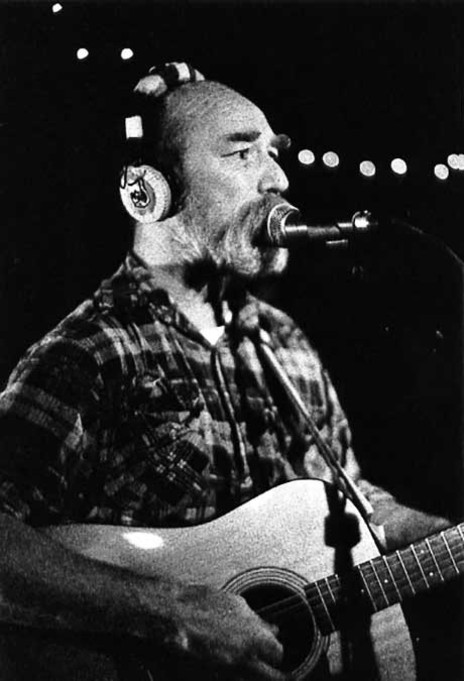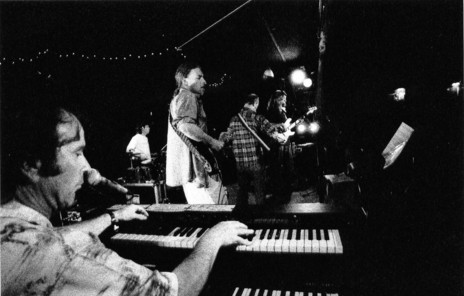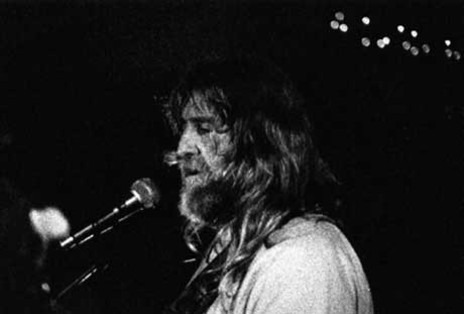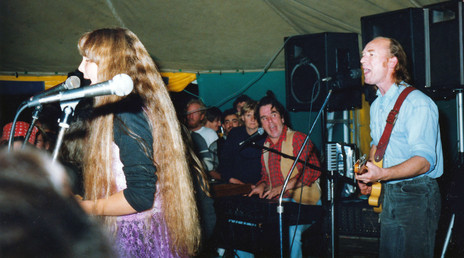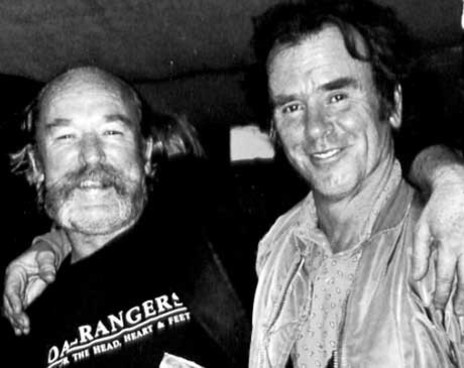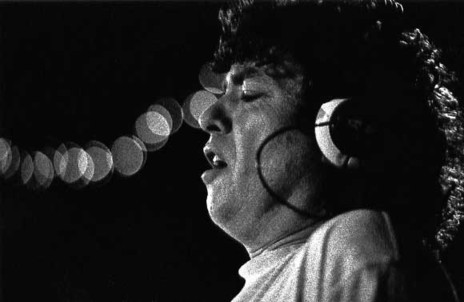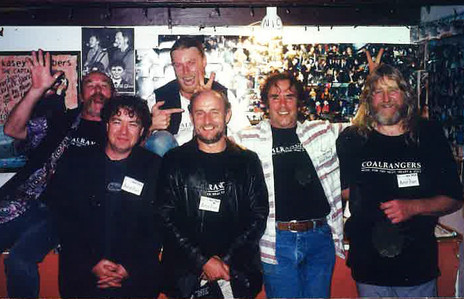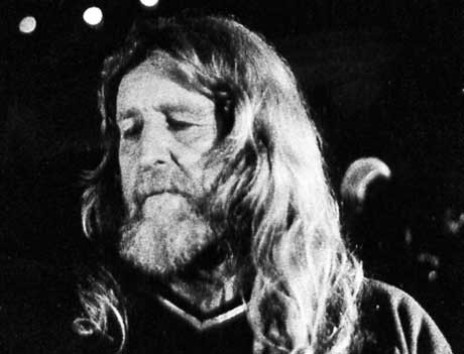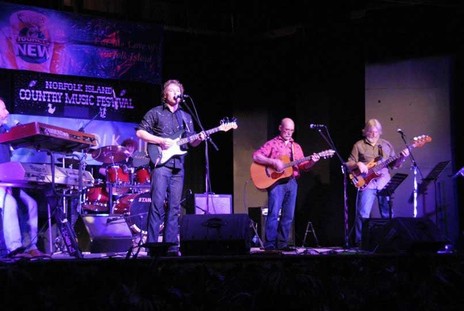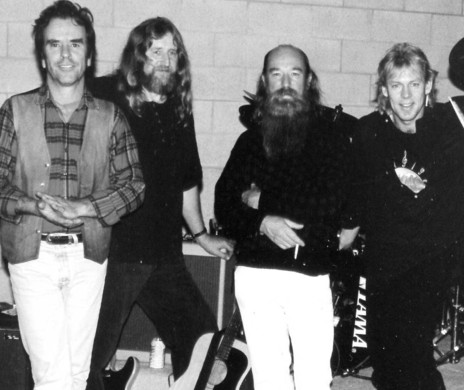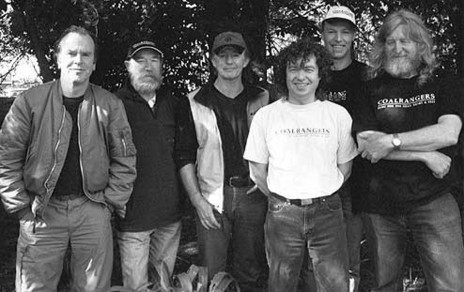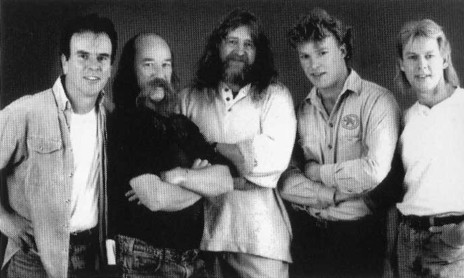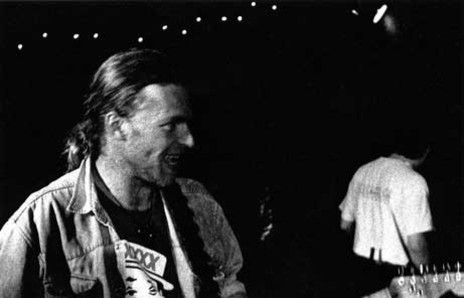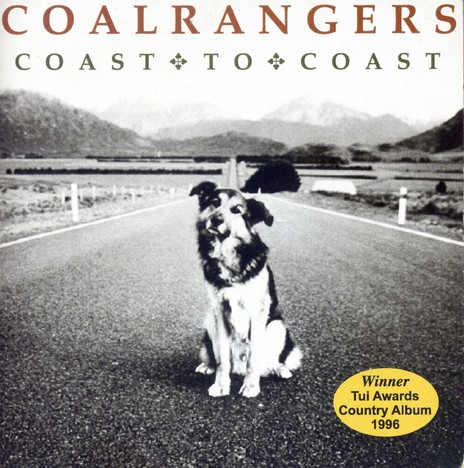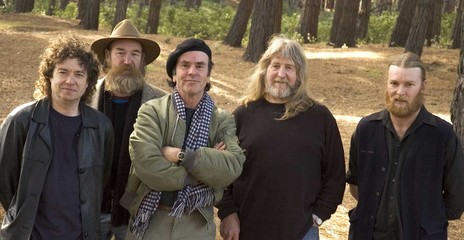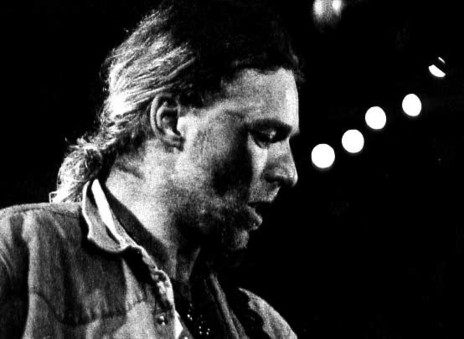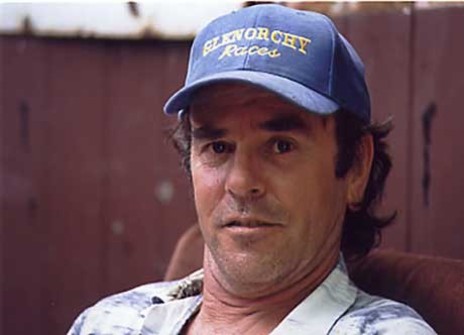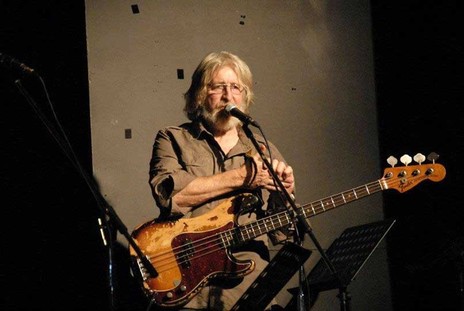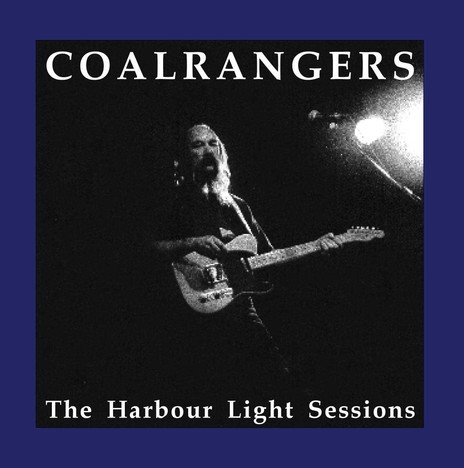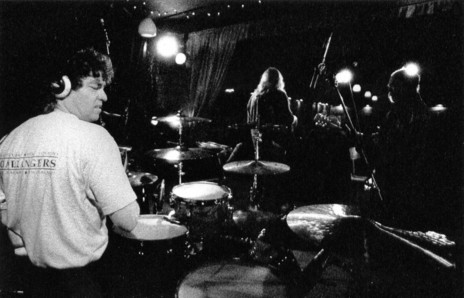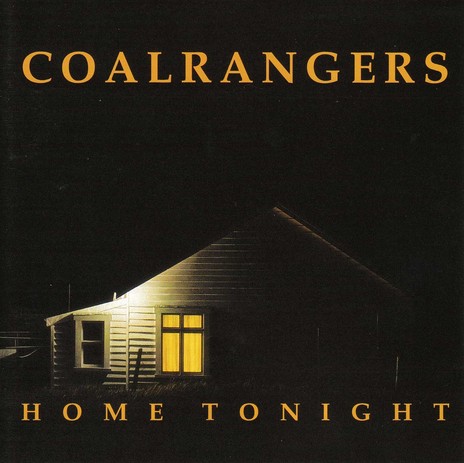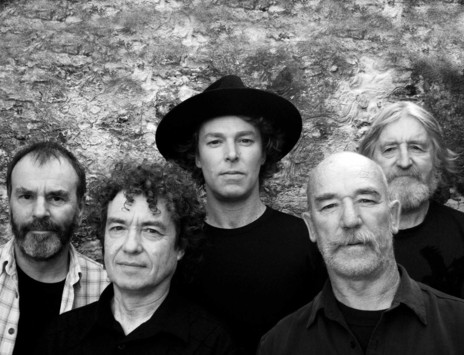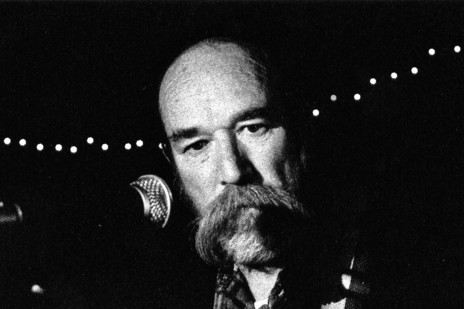Their pal and fellow songwriter Al Hunter probably said it best in his liner notes on The Coalrangers’ 1996 award-winning album Coast To Coast, comparing their music to Highway 73 through Arthur’s Pass in the Southern Alps – the route from Hokitika to Christchurch. “The album is a bit like that journey – gentle and lilting, bold and rocky, high and lonesome and down and dirty,” he wrote.
The Coalrangers formed in the late 1980s, by which time the three longest-serving members – John Lloyd, Geoff Farmar and Des Hetherington – had already spent a decade making music together in various combinations.
19-year-old keyboard player John Lloyd had been in a couple of minor Christchurch bands before joining The Blues Army Salvation, later shortened to Salvation, in 1968. They were signed to Barry Coburn’s short-lived Viking Ventura label and released the single, ‘I’d Rather Be Asleep’, written by bassist Don McKenzie. The flip side was a cover of The Byrds’ ‘Why’ with Lloyd on lead vocals.
When the band ended in 1972, Lloyd took a break from the music scene and became an art teacher at Christchurch Boys’ High School. At the end of the 70s his former Salvation bandmate Mike Waldegrave invited him to join his new band The Cowboys. “Who’s playing bass?” Lloyd asked. “Oh, a friend of mine from Palmerston North, Geoff Farmar.”
Starting as a drummer, Farmar had been biding his time, trying to earn a buck in commercial covers bands since the 1960s. He became part of the nine-piece Happy Cactus Western Swing Orchestra, which could only play on Saturday afternoons because all of the members were in other bands during the evening. The Orchestra exposed him to all manner of country music, from Bob Wills to the modern sounds of the day and he began writing his own songs.
With a repertoire ranging from Frank Zappa to The Allman Brothers to a few of their own songs, The Cowboys held down a residency at the Carlton Hotel for a good part of the early 80s, but a lack of enthusiasm for each other’s songwriting helped bring an end to the band. Lloyd and Farmar were in a bunch of short-lived groups together when Lloyd became involved in New Zealand legend John Hore Grenell’s annual Whitecliffs music festival. A graphic designer, he handled advertising and artwork.
At one of the festivals, Lloyd and Farmar met up with Queenstown band Cat N The Rats, featuring guitarist Des Hetherington. Cat N The Rats and Farmar came together as a makeshift backing band for Californian Ron Valente. Valente had fallen in love with the South Island since arriving in New Zealand around 1980 and becoming a regular on TVNZ’s That’s Country as half of American duo The Gypsy Mountain Pickers.
Des Hetherington started as a bass guitarist in Hokitika band The Impact in the late 1960s before becoming a singing drummer in Swamp and then taking up guitar. By the late 1970s he was part of popular West Coast band Jasper and then moved to Queenstown where he met multi-instrumentalist Nigel Hirst and formed Cat N The Rats.
They changed names every week until settling on The Coalrangers and eventually adding Ranchsliders drummer Ashley Sheppard.
When he finished with Cat N The Rats and moved to Christchurch, Hetherington joined Farmar and Lloyd to form nine-piece country outfit The Ranchsliders. Due to its size, the band only played a handful of dates and Hetherington, Farmar and Lloyd appeared on the ill-fated TVNZ show Dixie Chicken in 1987 as a stripped back version of The Ranchsliders.
Put up by the show’s producers in a Wellington hotel, Lloyd accidentally destroyed his room after the wrap party when he ran a bath and fell asleep watching TV on the sofa in his underpants. Woken by the frantic knocking of his Japanese honeymooning neighbours, he jumped up and burnt his feet in the ankle-deep water that had flooded the apartment.
Struggling under the weight of their membership, The Ranchsliders imploded. Hetherington briefly journeyed home to the West Coast before returning to team up again with Farmar in a duo. They changed names every week until settling on The Coalrangers and eventually adding Ranchsliders drummer Ashley Sheppard.
The band became a quartet when Farmar invited Lloyd to sit in at a Dux de Lux gig. Travelling light, Lloyd arrived with a piano accordion and an acoustic guitar and after the gig asked what the band was called. “The Coalrangers? What a dreadful name.” But he stayed on all the same.
In the lead-up to John Hore Grenell’s 25th anniversary as a recording artist, he engaged The Coalrangers as his touring band in 1988. A highlight was a show at Naseby, where Grenell had won the Joe Brown talent quest that set him on his way in 1963.
Mike Darby replaced Sheppard on drums for a residency at the United Services Hotel in Christchurch. One night Grenell turned up with Emmylou Harris’s Hot Band alumnus Wayne Goodwin, who jammed with the band. Grenell had brought Goodwin from the United States to produce an album to celebrate his recording milestone, for which Farmar, Hetherington and Darby travelled to Mandrill Recording Studios to provide backing.
Augmented by Auckland session musicians Red McKelvie and Brendan Power, the resultant Silver was released on Ode and barely made a ripple. When Grenell hit No.1 with the Murray Grindlay produced Toyota jingle ‘Welcome To Our World’ (a cover of a standard popularised by Jim Reeves) two years later, the album was released again as Welcome To Our World on CBS – with the hit song added and the same packaging – and fared much better.
Back in Christchurch, Ashley Sheppard returned on drums and began siphoning off a percentage of the band’s fees. Before long he announced that they now had enough money set aside to record an album. They went in to Tandem Recording Studios in Christchurch with engineer Peter Rattray and laid down some of Farmar’s original songs and songwriter mate Ron Valente’s jaunty ‘West Coast Bound’. The result was the tape Making It Work, released in 1989.
Sheppard left and was replaced by Wayne Beecroft before The Coalrangers entered Tandem again to provide the backing for Valente and his wife Lindy’s album The Gypsy Pickers And Friends. The CD included The Gypsy Pickers’ own version of ‘West Coast Bound’ with help from The Warratahs.
In the mid-1990s The Coalrangers began a long association with the Blues, Brews & BBQs festivals.
In the mid-1990s The Coalrangers began a long association with the Blues, Brews & BBQs festivals – a concept imported from Texas that saw them play at events and win fans in Christchurch, Blenheim, Tauranga, Hastings and Auckland over the next few years.
Promoter Derek McCullough brought the franchise to New Zealand after a visit to the States. He was initially after a backing band for blues singer and BB King protégé Ruby Wilson and was led to The Coalrangers, who toured the country with her, culminating in a gig at The Gluepot in Auckland.
The Coalrangers released their first CD Coast To Coast in early 1996. Made up mostly of Geoff Farmar material, it included ‘West Coast Bound’ and three others from the previous Making It Work, as well as two contributions from John Lloyd and one from Des Hetherington. The new songs were recorded at Tai Poutini Polytechnic, Greymouth, Hetherington’s lounge and Redd Acoustics, Christchurch, except for three live tracks from a New Year’s Eve gig at the city’s Civic Bar.
A long-time fan, Speight’s Coast to Coast founder Robin Judkins helped finance the follow-up album Home Tonight and for a time managed the band. Years earlier, he had booked Lloyd and Farmar’s previous band The Cowboys, as well as Netherworld Dancing Toys and other acts, for a one-day Queenstown rock festival.
When Judkins hit paydirt with the Speight’s Coast to Coast he did not forget his buddies from The Cowboys, who were now The Coalrangers. He would book the band to play at the halfway mark of the Coast to Coast on the Friday afternoon each year as well as at his famous Christmas parties on his property on the hills overlooking Sumner.
Between Coast To Coast and the recording of Home Tonight, The Coalrangers gained an additional guitarist in Des Hetherington’s son Dean. The young Hetherington had been around the band, knew all the material and was an easy fit, allowing his father to concentrate on acoustic guitar.
Recorded at Redd Acoustics, the sessions for Home Tonight took a turn for the worse when drummer Wayne Beecroft quit after repeated clashes with producer and engineer Peter Cahill, a drummer himself. Former Newz drummer Allan Cattermole stepped in to complete the recording and ended up remaining with the band.
Cattermole had toured New Zealand in the mid-70s with glam rock group Skylord. He played the rest of the decade with notable Christchurch bands Bon Marche and The Newz. The 1980s found him living in Melbourne playing with Domino Theory, who were signed to WEA. He toured New Zealand and Australia playing various Dennis Brown Promotions shows and was a go-to drummer for numerous projects and sessions before fitting effortlessly into the eclectic Coalrangers.
John Lloyd came upon the artwork for Home Tonight at a CSA (Canterbury Society of Arts) exhibition of New Zealand landscape and urban scene paintings. He called manager Robin Judkins excitedly to tell him he’d found the ideal cover in a painting by Grahame Sydney called Night House II. It just so happened Judkins already owned the piece. When the band met Sydney at the album release party he was none too pleased to have his painting used for something so mundane as a CD.
Judkins stepped aside from his management role after losing The Coalrangers their spot at Sweetwaters 1999. Organisers kept changing which stage the band would appear on and then wanted them to back Texan singer Pat Green. It came to a head with a heated phone call between Judkins and a Sweetwaters representative, and a sheepish Judkins had to phone the band in Queenstown to tell them they wouldn’t be going. It turned out to be a blessing in disguise when Sweetwaters turned sour.
Later that year ‘West Coast Bound’ and other songs appeared in director Vanessa Alexander’s film Magik and Rose, based around the West Coast of the South Island, and the band even made a cameo appearance, filmed performing at the Hokitika Wildfoods Festival.
In 2003 came the live collection The Harbour Light Sessions, featuring new songs recorded at sound check and old songs from two of The Coalrangers’ annual Office Christmas Party shows. There were guest appearances from Raglan guitarist and producer Dave Maybee and That’s Country pedal steel guitarist Paddy Long. After Lyttelton’s Harbour Light Theatre was destroyed in the 2011 earthquake, the album was repackaged to honour the venue.
Apart from playing support for The Amazing Rhythm Aces on two separate occasions, The Coalrangers’ reputation as a backing band caught the attention of Poverty Bay hardman-turned-multimillionaire-turned-country-singer Kimball Brisco Johnson. He flew the band north where they arranged and recorded a collection of song ideas that saw the light of day as Tear Or Two in 2003. Johnson employed them in Christchurch the following year to record an even-less-than-memorable follow-up. Guitarist and promoter Gray Bartlett’s reported comparisons of Johnson to Bob Dylan weren’t fooling anybody.
Although The Coalrangers have been dormant for a couple of years, there have been murmurings of reunion shows on both sides of the Southern Alps. Geoff Farmar, John Sanchez-Lloyd (now incorporating his wife’s name) and Allan Cattermole are kept busy in Christchurch with a revamped Ranchsliders line-up that is completed with guitar ace Phil Doublet. They are preparing self-penned material for their first album. As duo Lloyd & Doublet, Sanchez-Lloyd and Doublet released the live album Live Ones From The Mussel Inn in 2012.
Dean Hetherington is part of The Sou’westers with singer-songwriter Aly Cook and Narcs keyboards player Liam Ryan, while Des Hetherington is in Hokitika in several bands and is working on pre-production for an intended Al Hunter album.
